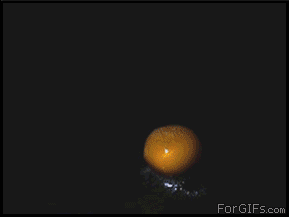Popping Popcorn with P
Emergent Literacy
By: Katie Morrow
Rationale: This lesson will help children identify /p/, the phoneme represented by P. Students will learn to recognize /p/ in spoken words by learning a meaningful representation (popping popcorn) and the letter symbol P, practice finding /p/ in words, and apply phoneme awareness with /p/ in phonetic cue reading by distinguishing rhyming words from beginning letters.
Materials: Primary paper and pencil; chart with "Polly made popcorn in her painted pink pajamas"; drawing paper and crayons; Dr. Seuss's ABC (Random House, 1963); word cards with PIG, POT, KEPT, MOON, PORK, and FAN; assessment worksheet identifying pictures with /p/ (URL below).
Procedures: 1. Say: Our written language is sometimes tricky. The part that may be confusing is learning what letters stand for—or how the mouth moves we make as we say words. Today we're going to work on spotting the mouth move /p/. We spell /p/ with letter P. P looks like popcorn jumping up to pop, and /p/ sounds like popcorn popping
2. Let's pretend to pop popcorn, /p/, /p/, /p/. [make hands explode like a popcorn kernel that pops] Notice where your lips are? (pressing against each other). When we say /p/, we push air out to push our lips apart
3. Let me show you how to find /p/ in the word nope. I'm going to stretch nope out in super slow motion and listen for my popcorn popping. Nnn-oo-ope. Slower: nnn-o-o-o-ppp-e. Did you feel that /p/?! I felt my lips push opened by blowing air out. I can feel the pop /p/ in nope.
4. Let's try a tongue twister [on chart]. "Polly made popcorn in her painted pink pajamas." Everybody say it three times together. Now say it again, and this time, stretch the /p/ at the beginning of the words. "pppolly made pppopppcorn in her pppainted pppink pppajamas." Try it again, and this time break it off the word: "/p/ olly made /p/ opcorn in her /p/ ainted /p/ ink /p/ ajamas..
5. [Have students take out primary paper and pencil]. We use letter P to spell /p/. Capital P looks like popcorn jumping up to pop. Let's write the lowercase letter p. Start by drawing a straight line down. Then go back to the top and make a half circle, connecting it half way down. I want to see everybody's p. After I put a smile on it, I want you to make nine more just like it.
6. Call on students to answer and tell how they knew: Do you hear /p/ in fork or dump? puddle or shoe? down or up? Lift or drop? See or soap? Say: Let's see if you can spot the mouth move /p/ in some words. Pop your popcorn if you hear /p/: star, loop, piper, nut, rope, mop, jug, cat, pot
7. Say: "Let's look at an alphabet book. Dr. Seuss tells us about a silly creature painting pajamas pink!" Read page 16, drawing out /p/. Ask children if they can think of other words with /p/. Ask them to make up a silly creature name like priper-prepper-prip, or potter-pinker-pank. Then have each student write their silly name with invented spelling and draw a picture of their silly creature. Display their work.
8. Show PIG and model how to decide if it is pig or wig: The P tells me to pop popcorn, /p/, so this word is ppp-ig, pig. You try some: PIN: pin or din? Jam: pam or jam? Prim: prim or trim? PORK: fork or pork? RAD: rad or pad?
9. For assessment, distribute the worksheet. Students are to complete the partial spellings and color the pictures that begin with P. Call students individually to read the phonetic cue words.
http://www.auburn.edu/academic/education/reading_genie/voyages/brockel.html.l
Assessment worksheet: https://www.kidzone.ws/kindergarten/p-begins1.htm
Practice sheet for writing letter p: thesingingwalrus.com
Dr. Seuss, Alphabet Book.
To return to Ingenuities page, click here
